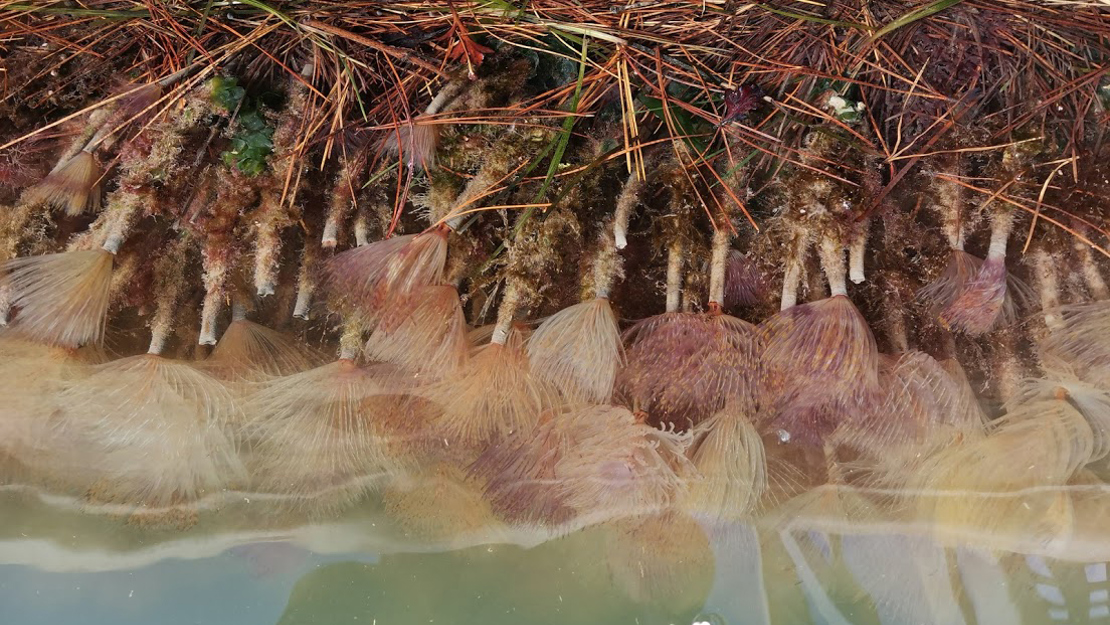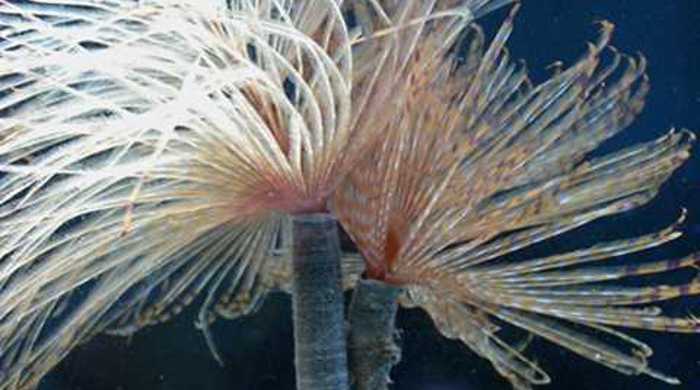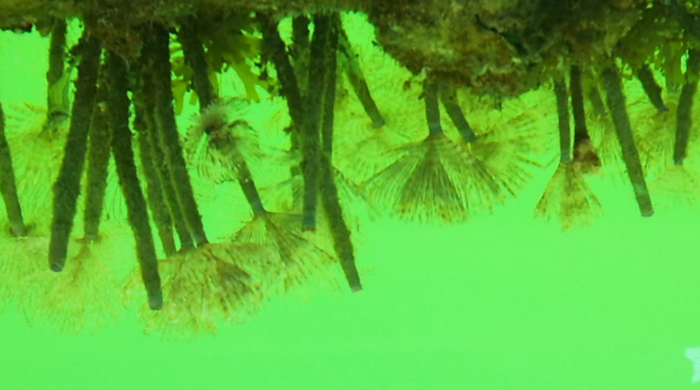Sabella spallanzanii
Mediterranean fanworm
Family: Sabellidae
Origin: Mediterranean and Atlantic coasts of Europe

Regional Pest Management Plan (RPMP) status
- Whole region — Sustained control
General description
A large tube-dwelling bristle worm typically found in estuaries and sheltered sites up to depths of around 30 metres. It has a flexible, leathery tube, up to 80 centimetres tall, topped with a single, spiral fan of feeding tentacles, often banded orange, purple or white.
What you need to know
To help protect our environment:
- You must not breed, distribute, release or sell any Mediterranean fanworm within the Auckland region.
- If you’re in charge of any craft in the Auckland region you must ensure that the level of fouling on the hull and in niches of the craft does not exceed ‘light fouling’.
- If you’re in charge of any craft in the Auckland region you must ensure that it is free of all ballast water, bilge water, holding tank water or sea water held in any other container when entering any marine body from the land.
Habitats
Attaches to a wide variety of hard surfaces including rocks, wood, steel, concrete, shellfish and artificial materials, and is most commonly spread as fouling species on moored vessels.
Impact on environment
Can form dense beds that are likely to out-compete other species, clog fishing gear and dredges, and interfere with biological processes. It has the potential to compete with native filter-feeding organisms for food and space which can impact upon the mauri of the moana.
In high densities, Mediterranean fanworm is likely to also impact commercially on important kaimoana species including kuku / kūtai (mussels), tio (oysters), and tipa / tupa (scallops).
Control
Management
Before moving your boat or other craft to new locations, make sure the hull, anchor chain and all other equipment on board is clean and free of marine pests or other fouling.
Think about where you’re taking on or releasing ballast, bilge or holding tank water, or water in any other container such as chilly bins, to avoid spreading marine pests.
For more information on Mediterranean fanworm and how to avoid spreading them, please visit Prevent pests from spreading or contact Auckland Council at pestfree@aucklandcouncil.govt.nz.





